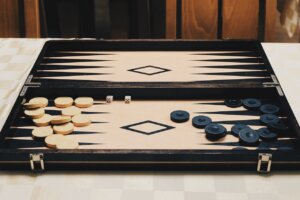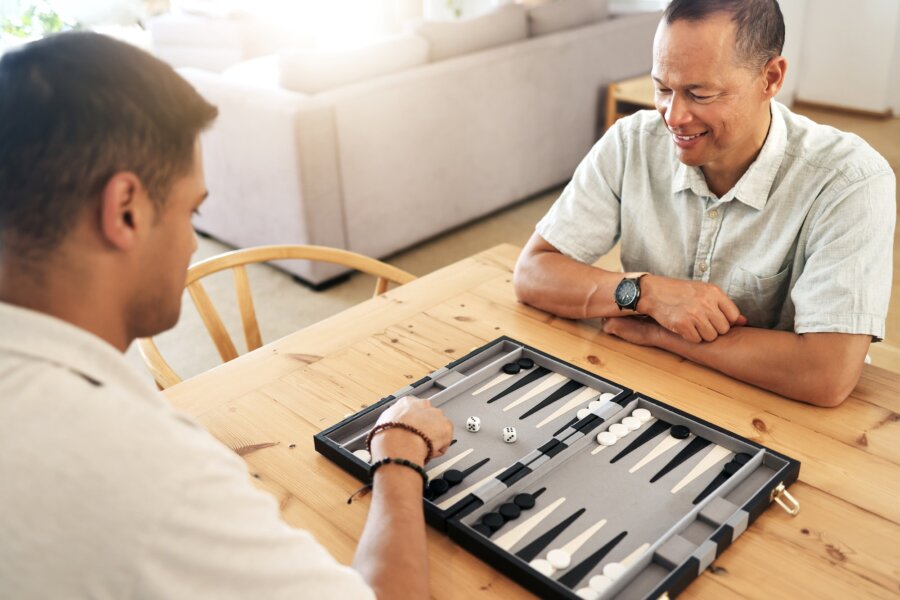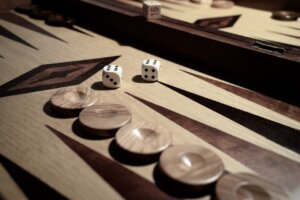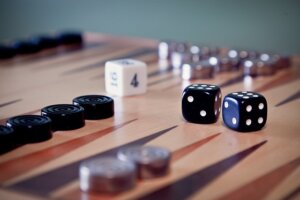
How to Use the Backgammon Doubling Cube
For many newcomers or casual players, backgammon can be a highly entertaining game. However, the doubling cube can be a great addition for those looking
Backgammon is one of the oldest-known board games, with a rich and fascinating history that spans thousands of years and multiple continents. While the exact origins of the game are unknown, it is believed to have been played in various forms throughout the Middle East, Europe, and Asia for centuries.
In this article, we’ll journey through time to explore the origins and evolution of backgammon, from its earliest roots to its modern-day popularity. So join us as we delve into the fascinating world of backgammon history.


As we know it today, Backgammon history is believed to have started in the Middle East, specifically in Persia (modern-day Iran). The game was known as “Nard” in Persia and was played on a board with 24 points. It was considered a game of skill and was often played by royalty and nobility.
Backgammon made its way to Europe during the Crusades, and it quickly became popular among the upper classes. In the 17th century, the game was standardized with the modern board and rules we use today. Backgammon history continued throughout the 18th and 19th centuries, and the game was played in coffeehouses and clubs across Europe.
Today, backgammon history has engulfed all corners of the world, from casual games in people’s homes to high-stakes tournaments with thousands of dollars on the line. It has also grown in popularity recently, with online backgammon sites and apps making it easier than ever to play the game with people from all over the world.
Courtesy of its rich roots in various cultures, backgammon has numerous variants. Each version features a unique quality to endear it to players and distinguish it from any other. The most enjoyable are as follows:

Acey-Deucey is mostly played by the US Navy and other military settings. It differs from standard backgammon in several ways, including the use of an extra die, the ability to move a checker to any unoccupied point after rolling a 1-2, and the requirement to enter checkers into the game on the opponent’s 1-point.
This fast-paced backgammon works on a shorter board with only three checkers per player. The rules are mostly the same as standard backgammon, but the shorter board and fewer checkers lead to more aggressive play and a greater emphasis on timing.
Nackgammon is played with a different starting position. Rather than starting with checkers on the 1-point and 24-point, players start with checkers on the 2-point and 23-point. This creates a different dynamic for the opening moves and can lead to new strategic considerations.
Backgammon 64 is played on a board with 64 spaces instead of 24. The game is played with three dice instead of two, and the additional spaces and dice lead to a more complex and strategic game.
Backgammon history is long and fascinating, as it is a popular game enjoyed by people all over the world today. Whether you’re a seasoned player looking to brush up on your skills or a beginner who has never played, this section will provide some tips and resources on how to become part of the backgammon history.
Your first foray into backgammon history requires a board and a set of backgammon pieces. While it’s possible to make your board and pieces, most players prefer to purchase them from a retailer or online store. There are many types of boards and pieces available, ranging from inexpensive plastic sets to high-end luxury sets made from exotic woods and materials.
One of the best ways to improve your backgammon skills and meet other players is to join a local club or organization. Many cities have active backgammon clubs that hold regular tournaments and social events, and there are also many online communities and forums where you can connect with other players and learn from their experiences. You'll also find out more about backgammon history there!
If you don’t have access to a local club or organization, or if you prefer to play from the comfort of your own home, there are many online backgammon platforms where you can play against other players from around the world. Some platforms are free to use, while others require a subscription or membership fee.

For many newcomers or casual players, backgammon can be a highly entertaining game. However, the doubling cube can be a great addition for those looking

As Backgammon is a game of strategy and skill, understanding the rules for hitting is critical to your success in this game. ”Hitting” occurs when

This is another post for beginners to backgammon and will cover how points are scored in a backgammon match. Click the following link for more

If you’re a fan of backgammon and have invested in a Backgammon set, then you’re probably well-versed in the basic rules and strategies of the

This is another post for beginner players of backgammon. Here we’ll be having a look at how checkers make their way around the board, which

Backgammon is a game that, like many other board games, requires a combination of luck and skill. However, while luck can play a significant role
Backgammon history is a rich, fascinating adventure that’s spanned thousands of years and is still being written. From its origins in the Middle East to its spread throughout Europe and eventual rise to popularity as a global favourite, the game has evolved and adapted over time while still retaining its timeless appeal. Whether you are a beginner just learning how to play or an experienced player looking to master advanced backgammon strategies, the game of backgammon offers endless opportunities for challenge and enjoyment.

Backgammon history began over 5,000 years ago!
You can find out more about backgammon history from our homepage, as well as other backgammon history sites and clubs.
To play backgammon, each player starts with 15 pieces arranged on a board with 24 points. The objective of the game is to move all of your pieces around the board and off the board before your opponent does the same. Players take turns rolling two dice and moving their pieces according to the numbers that come up on the dice.
The basic rules of backgammon involve moving pieces around the board and bearing them off while trying to prevent your opponent from doing the same.
Effective strategies across backgammon history include focusing on controlling the centre of the board, hitting your opponent’s pieces when possible, and creating blockades to prevent your opponent from moving their pieces.